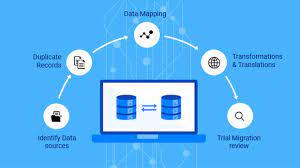There comes a time in almost every company’s lifecycle when the unique benefits of cloud computing become too many and too hard to resist. Cost savings, enhanced security, flexibility, scalability, and mobility – all these things are closely associated with working in the cloud. However, alongside multiple enticing rewards, there are quite a few challenges any company that chooses data migration to Azure as the next logical step in its development must be aware of, regardless of whether it performs the transition itself or hires a professional cloud migration service provider like Dedicatted.
3 most common Microsoft Azure migration challenges
Here are the three most widespread Azure migration challenges faced by organizations heading for the cloud and possible ways to overcome those:
- Planning data migration to Azure
The preparation for the Azure migration process is a challenge in itself. It necessitates a significant time commitment and a specific set of skills to ensure success. The decision to migrate to the cloud must be based on careful analysis and assessment of the advantages and disadvantages of such a move. The planning process includes the following four stages:
- Making a comprehensive plan.
- Consulting with stakeholders on the technology and business owners’ sides.
- Determining the Total Cost of Ownership
- Evaluating apps to be moved and migrating those with the lowest number of dependencies first.
- Integrating Azure apps and services with the on-premise systems
Unlike external third-party integrations, migrating the company’s internal systems (PoS, mail servers, etc.) might prove a significant challenge, especially if those were not separated prior to the transition and are being migrated to the cloud in stages. Using Azure Integration Services and testing the migration of a few integrations in advance can help the company understand the pain points it might experience during the bigger move and discover ways to reduce downtime.
- Re-organizing in-house tech teams to embrace cloud capabilities
Transferring apps and infrastructure to the Azure cloud might cause additional challenges as far as staffing is concerned. After moving to the cloud, many companies realize they need to introduce new positions within their tech departments for people trained to use cloud services as a development platform. For their long-term goals, businesses that intend to create cloud-native apps and data processing systems must account for this employment aspect and carefully sync their migration efforts with the recruiting of cloud engineers and other talents with a specific skillset.






